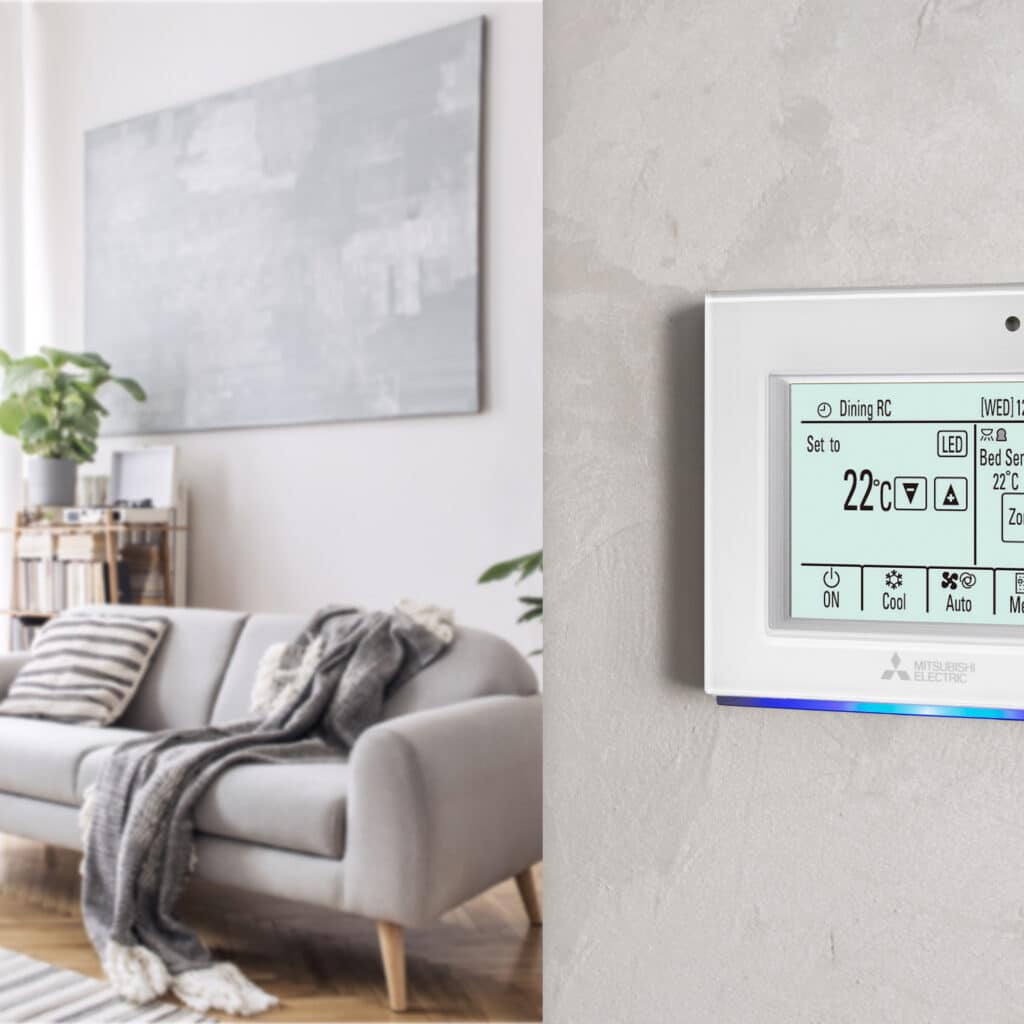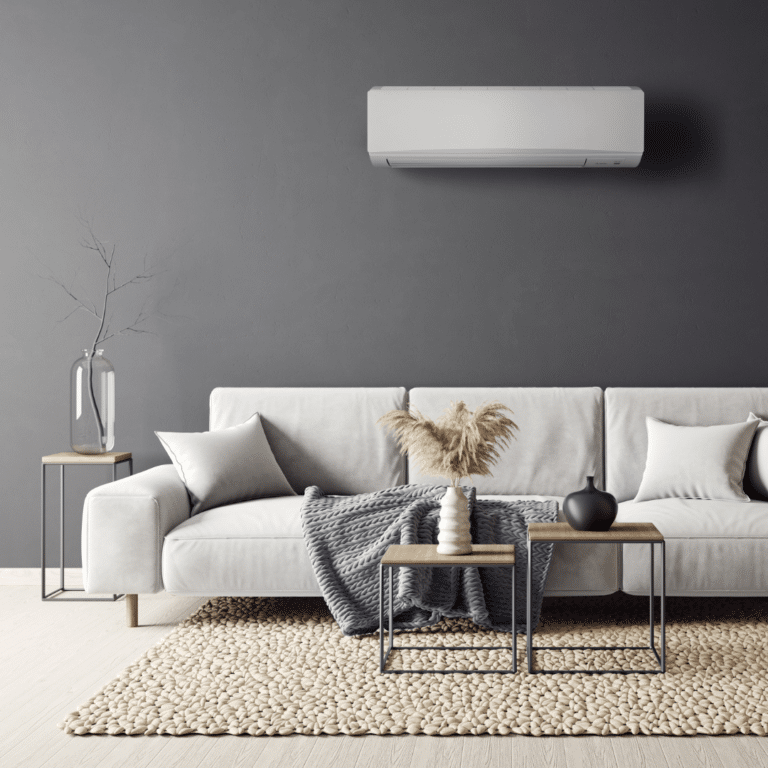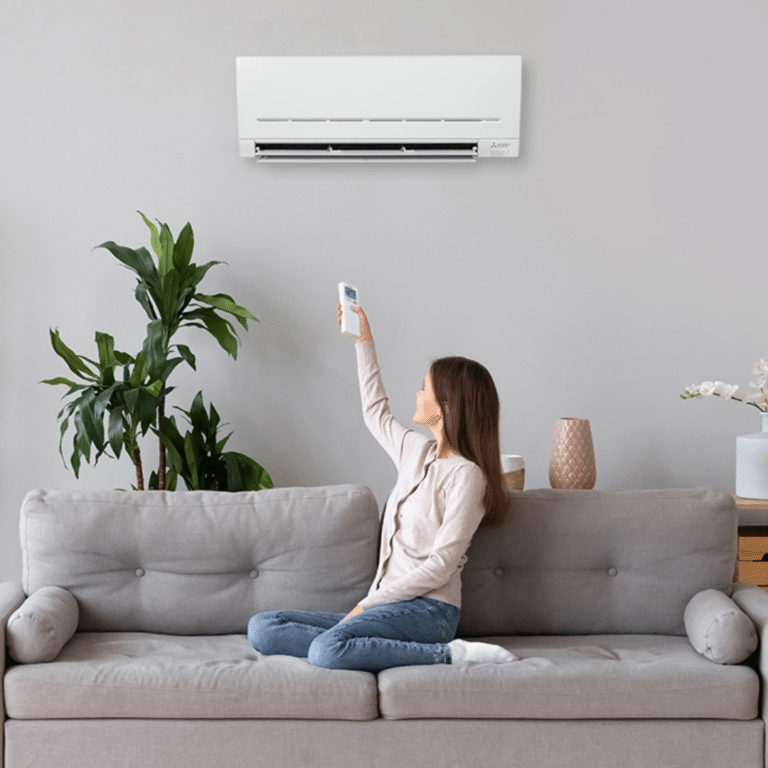If you’re looking for a way to regulate the temperature in your home or office, an air conditioner is an excellent solution. But what are the different types available, and how do they work? Luckily, we’ve put together a comprehensive guide to air conditioning basics to walk you through everything you need to know. Whether you’re looking to heat or cool a single room or your entire home, this guide will help you make an informed decision.
What is reverse cycle air conditioning?
Reverse cycle air conditioning is a good option for many homes as it can both heat or cool a room or space depending on the weather, eliminating the need to own an air conditioner and separate heater. They are beneficial in areas throughout Australia where the temperature can fluctuate throughout the year.
Reverse cycle air conditioning works by reversing the flow of the refrigerant, which allows the air conditioner to cool the warm air in summer and heat the cold air in the winter months. It is available in both split system units and ducted air conditioning systems.
What is a split system air conditioner?
A split air conditioning system consists of two separately installed components: an indoor unit and an outdoor unit. The indoor unit is usually mounted on an internal wall or in a ceiling space and contains a heat exchanger, air filter and fan, while the outdoor unit is placed outside the building and has the compressor and heat exchanger. Refrigerant pipework and electrical cables connect the two units. Split system air conditioners come in various styles and capacities, making them suitable for small to large open-plan rooms.
Many split systems are reverse cycle these days. If you live in warmer climate zones with consistent hot temperatures cooling only split systems are available. Overall, split system air conditioners are a popular choice for their flexibility, efficiency, and ease of installation.
Single-split vs multi-spilt
Split system air conditioners can be either single-split or multi-split. Single-split systems consist of one indoor and one outdoor unit designed to cool or heat a single room or space. Multi head split system air conditioners have multiple indoor units connected to a single outdoor unit and are designed to cool or heat multiple rooms or areas. They can be ideal when needing to air condition numerous rooms without sacrificing more space to install multiple outdoor units.
How does a split system air conditioner work?
A split system air conditioner works by circulating refrigerant between two units, the indoor unit and the outdoor unit. Here is how it works:
Cooling mode:
In cooling mode, the indoor unit contains an evaporator coil that cools and dehumidifies the air. The indoor unit pulls in warm air from the room and blows it over the evaporator coil. The evaporator coil contains cold refrigerant that absorbs the heat from the air, thereby cooling and dehumidifying it. The cooled air is then blown back into the room through the indoor unit’s fan.
Heating mode:
In heating mode, the process is reversed. The indoor unit absorbs heat from the air and blows it into the room to warm it up. The outdoor unit contains a compressor that compresses the refrigerant and increases its temperature. The heated refrigerant then circulates through the indoor unit’s evaporator coil, which releases the heat into the air blowing over it, warming the room.
The two units are connected by refrigerant lines, which carry the refrigerant back and forth. The outdoor unit removes the heat absorbed from the indoor unit and releases it into the outside air.
What is ducted air conditioning?
Ducted air conditioning is a popular form of climate control. It uses a ceiling-concealed unit to provide cool or warm air and distribute it via ductwork and diffusers or grilles throughout a building. It is typically used in larger homes and commercial buildings, where individual split system units are impractical. They are generally quieter than other forms of air conditioning, as the noisy parts of the system are located outside the home or in a separate room.
Ducted air conditioning systems can be designed to suit the specific needs of a home. Having the air conditioning unit concealed in the ceiling cavity or bulkhead space allows the homeowner to locate the unit out of view and choose the diffusers or grilles to suit the architectural design.
Additional features such as air filters, zone control, and remote access control can be included. Ducted systems are popular for their efficiency, flexibility, and ability to provide year-round climate control for entire homes.
How does ducted air conditioning work?
Ducted air conditioning works by distributing cool or warm air through a series of ducts installed in the ceiling. To cool your home, the ducted air conditioning unit draws in warmer air from the room and passes it over an evaporator coil. This coil contains a refrigerant that absorbs heat from the air, causing the air to cool. The cooled and conditioned air is then distributed through the ducts to each room or area of the building via vents or diffusers.
Ducted air conditioning systems can be zoned using a zone controller. This means dividing your home into separate zones of different areas or rooms, which can be cooled or heated independently, allowing for greater flexibility and energy efficiency. Giving you the ability to turn off a section in your house when it’s not in use, like a bedroom during the day, while keeping your home office warm or cool as you work.
If you are considering a new air conditioning system for your home, your local dealer can give you knowledgeable advice to suit your needs. Contact your local dealer here.



